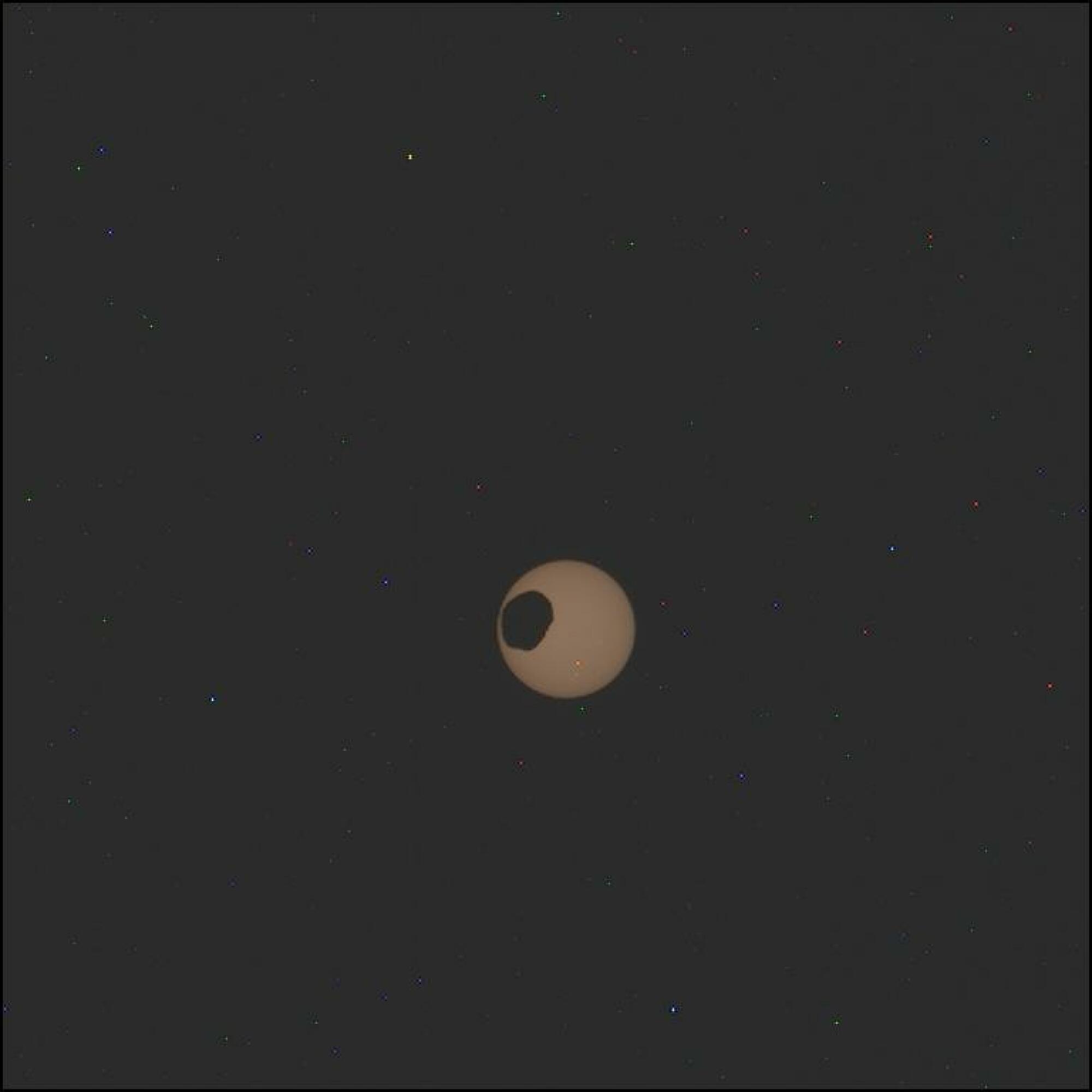There aren’t any Martians around to watch eclipses on Mars. But there are robots.
NASA’s Mars Perseverance rover recently spotted the desert planet’s misshapen moon, Phobos, traversing the sun. The space agency’s car-sized robot used cameras atop its mast — which act like a crow’s nest aboard a ship — to capture the image below on Feb. 8. It was the rover’s 1,056th Martian day, or Sol, exploring the Red Planet.
You can spy the oddly-shaped satellite partially eclipsing our star as the moon moves between Mars and the sun. The background is a canvas of distant stars.

On Feb. 8, 2024, NASA’s Mars Perseverance rover captured this image of the moon Phobos eclipsing the sun.
Credit: NASA / JPL-Caltech / ASU
Here on Earth, we can witness a number of different solar eclipses, including the looming total solar eclipse, a rare celestial event happening on April 8, 2024. For those in the “path of totality,” the moon will completely block out the sun for some three to over four minutes.
Mashable Light Speed
Our moon is almost spherical, but Phobos isn’t nearly. It’s relatively small and not too massive, with its longest side measuring just 17 miles (27 kilometers) long. “Phobos is too light for gravity to make it spherical,” the European Space Agency explains. What’s more, it’s been hit time and time again by potent space rocks. “Phobos was nearly shattered by a giant impact, and has gouges from thousands of meteorite impacts,” NASA noted. The glaring impact site is Stickney crater, which is 5.6 miles (nine kilometers) wide.
Phobos won’t be a moon forever. Every year, it moves some six feet (1.8 meters) closer to the Red Planet. “At that rate, the moon will either crash into Mars in 50 million years or break up into a ring,” NASA explained.
When not stargazing, the space agency’s Perseverance rover, which expertly landed on Mars in February 2021, uses its specialized cameras to explore a dried-up river delta in Mars’ Jezero Crater. Some 3 billion years ago, NASA’s planetary scientists suspect this area was filled with water.
“This delta is one of the best locations on Mars for the rover to look for signs of past microscopic life,” NASA said.

